Being able to evaluate proper focus on the matte area of the focusing screen can be very useful, both for those of us who like to use manual focus lenses and do not want to care about the green dot or do not want to use a central focusing aid that forces re-framing after focusing, and also as an aid to evaluate proper focus when depending on auto focus. The problem is however that the stock screens are too transparent to make them optimal for visual focus evaluation. In the following I am trying to visualize what alternative focusing screens more close to the classic ground glass screens can do.
Sadly one of the main suppliers for alternative focusing screens, Katzeye Optics,
http://www.katzeyeoptics.com/ ,
has closed business as the founders wanted to move on to other ventures and they were not able to get anyone to take over the business. Any of their purchasing pages will take you to a notice about this. All the informative pages regarding installations etc. are still kept active.
In a previous thread in the old forum started 30 December 2011 I made a comparison between two different types of Katzeye focusing screens, both with and without Optibrite treatment, and the stock D5100 screen and and Nikon F4 type E screen. As the Optibright treatment (which is optimized for lenses with smaller max aperture opening) is unique to the Katzeyes, I will here only show the Optibrite treated screen and the F4 screen for the 50mm f/1.8 lens. The one remaining major supplier for alternative focusing screens currently appears to be
http://www.focusingscreen.com/. The alternative to the Katzeye all-matte special order version I am using in my three DSLR bodies would be their S-screen, which appears to use Canon Super precision matte screen as a starting point. It would be interesting to hear from anyone using this type of screen. They do show some example shots on their web pages. However there is no comparison with the stock screens, so I am going to show that in the following for the Katzeyes as an example of what alternative all matte screens can do for you.
Focusing screen comparisons.I used an old Nikon Coolpix 3700 in macro mode (only mode that still works...) to capture the viewfinder views of the tripod mounted DSLRs. At the time I had a stock focusing screen in my D5100 and a KatzEye standard all matte focusing screen in my D40x (and Katzeye Optibright in D200) The viewfinder shots had to be cropped quite a bit to only include the actual viewfinder view. (No magnifiers or other accessories were used on any of the viewfinders). The subject, my wax bear, was placed in front of a lot of rubble from the lab located at different distance to obtain a good background to evaluate.
First out, 50mm f/1.8 G wide open, compared at the end to D5100 shots at apertures from f/1.8 to f/5.6. Stock screen, D5100 50mm f/1.8 G
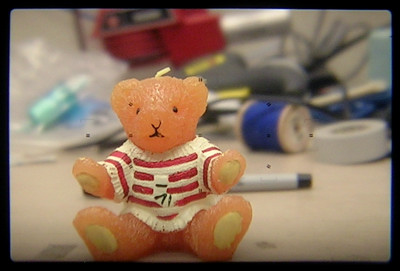
KatzEye standard matte D40x, 50mm f/1.8 G
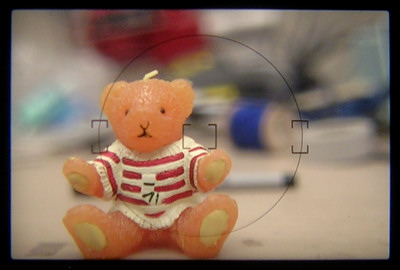
KatzEye w/ Optibright D200, 50mm f/1.8 G
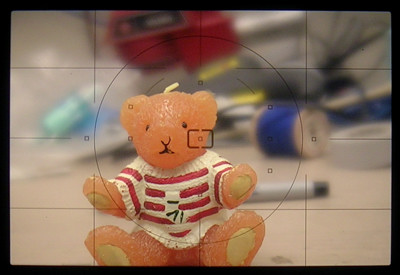
Stock E-screen Nikon F4, 50mm f/1.8 G (image sized according to viewfinder magnification)
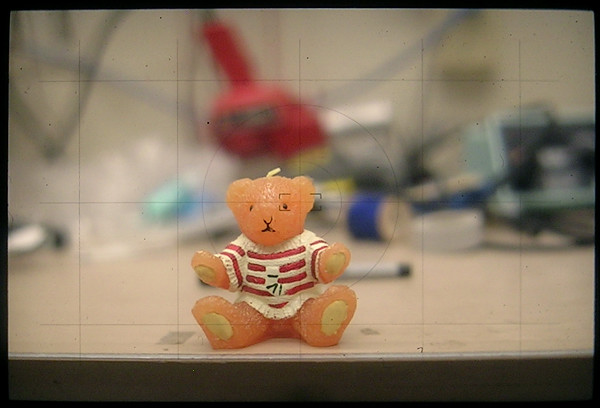
D5100 Capture 50mm @ f/1.8
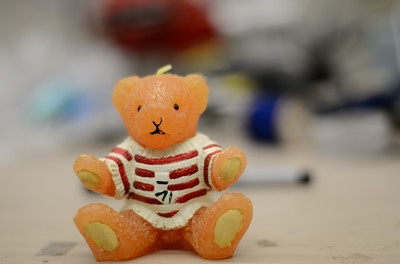
D5100 Capture 50mm @ f/2.8
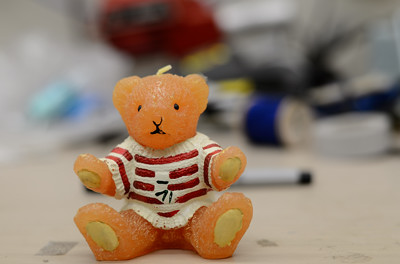
D5100 Capture 50mm @ f/4
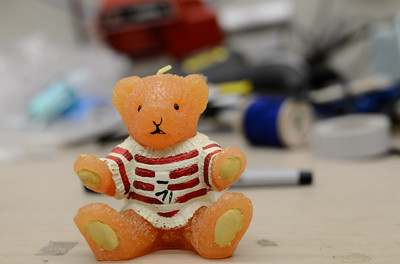
D5100 Capture 50mm @ f/5.6
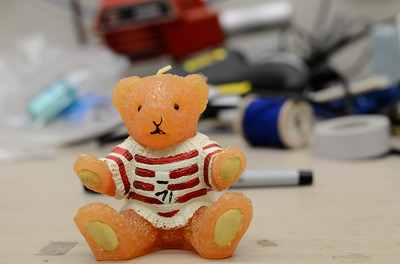
From these it looks like the D5100 stock screen corresponds to something closer to f/5.6.
Next 105mm f/2.5 AIS wide openStock screen D5100, 105mm f/2.5
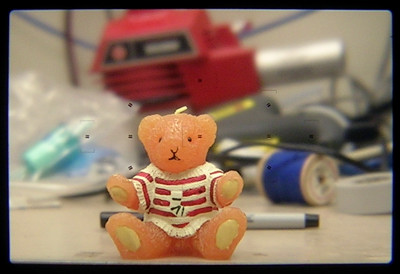
KatzEye standard matte D40x, 105mm f/2.5
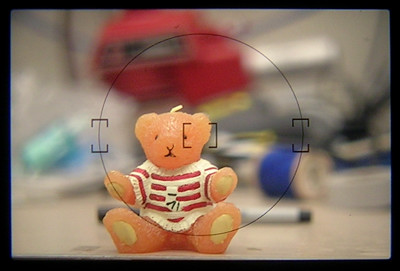
D5100 capture 105mm @ f/2.5
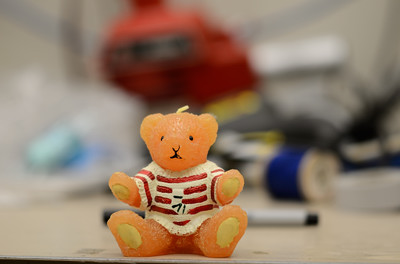 105mm f/4 AIS micro wide open
105mm f/4 AIS micro wide openStock screen D5100, 105mm f/4
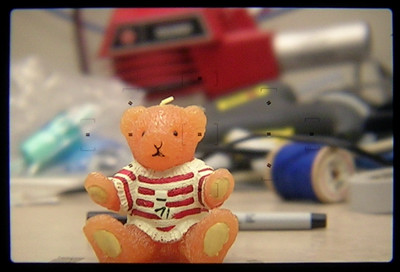
KatzEye standard matte D40x, 105mm f/4
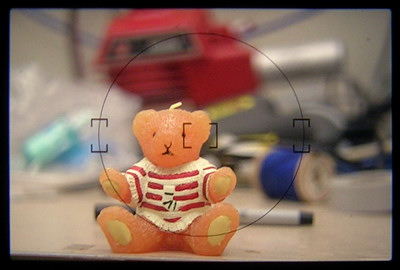
D5100 capture 105mm f/4
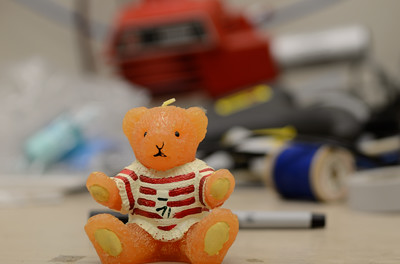 AF 300mm f/4 wide open + TC-14 = f/5.6
AF 300mm f/4 wide open + TC-14 = f/5.6Stock screen D5100 300mm/TC-14 f/5.6
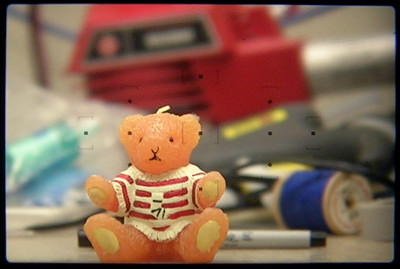
KatzEye standard matte D40x, 300mm/TC-14 f/5.6
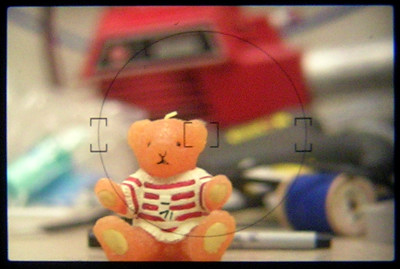
D5100 capture 300mm+TC-14 @ f/5.6 (exif does not reflect the TC)
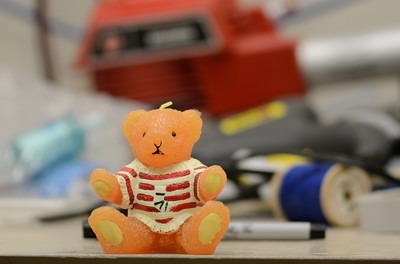
In all of these it looks like the Katzeye standard all matte screen gives a depth of field/background blurring very close to the captured image. Our ability to accurately focus the lens is also affected by magnification of the details. This is the same issue as when Bjørn keeps telling us that we cannot use depth of field tables, we need to consider magnification and viewing distance (if a print). A DK-17M on or DK-21M a DX viewfinder is a great help in this respect. The FX viewfinder already has a big advantage here although with my DK-17M my D200 viewfinder is very close to my F4. (Of course the FX finder can be further approved by with a magnifier). Unfortunately the magnifiers do not match well with wearing glasses.
Screen brightnessSo what is the penalty? Instead of presenting the somewhat shaky comparison in my previous presentation, and since the Optibrite treatment is out out the reach now that Katzeye is not operating any longer, I will just state that there is a penalty with respect to brightness with the standard Katzeye screen. This is not too noticeable at f/2.8 and wider, but at apertures beyond f/5.6 the viewfinder gets markedly darker. And then comes the influence of brightness for acuity, which under bright conditions might not be that much of an issue but very dim viewfinders like with the standard KatzEye screen at 300/4+TC-14 at f 5.6 may be so, not to talk about a f/8 mirror lens with an effective aperture of 10... . After this was written in the original post I ended up installing a standard Katzeye in my D5100, and it has served me very well, even with my 300mm+TC-14 when light is not too dim.
Focusing screen calibrationIn the original thread I asked the question:
"If you bought a KatzEye and installed it yourself, did you experience manual focus shifts (to the worse or to the better)?
In case to the worse, what did you do about it?" My own answer to this question is:
D200: No shift (or a very moderate shift that improved manual focus, not sure), focus on the matte area perfect after installation.
D40x: Noticeable shift (front focus as I recall), fixed by adjusting mirror with hex key, manual focus on the matte area perfect after adjustment. However autofocus has as a consequence become less accurate; I have not bothered trying to adjust the secondary mirror.
D5100: Marked error, corresponded to 0.1mm travel of the lens barred. Fixed by installing a shim (see below).
The installation of the screen in my D5100 itself went pretty smoothly except for the usual struggle with the shim wanting to come out with the original screen. This KatzEye screens has a nice handling notch that makes them very secure to handle opposed to the original that only have a small handling tab at the side. Also a nice tool to open and close the focusing screen catch is supplied and the catch was unproblematic.
After the install I did however as noted above experience a considerable back focus in the image when the focusing screen image was focused correctly. Thanks to my experience with a misaligned mount in a D5100 body that was replaced, I estimated that the screen would have to come ca. 0.1 mm closer to the mirror. I emailed KatzEye, and the suggestion was either to do a main mirror adjustment (my approach to correct a similar problem on my D40x) or to make up for the distance by applying a couple of layers of 3M tape to the short edges, or to make a shim out of printing paper which is about 0.1mm think.
Regarding the main mirror adjustment, the saying out there (including KatzEye's) seems to be that the AF adjustment (position of secondary mirror) is unaffected. However I wonder if this is the whole story, as the secondary mirror is attached to main mirror, and that point will theoretically form an arch on adjustment. The AF on my D40x was never very accurate after the adjustment - perhaps it never was, I am not sure, and I never bothered with the secondary mirror adjustment. Here is a simple schematic of how the mirrors are supposed to work:

The black circle is the AF adjustment screw that in this "experiment" is untouched while the effective position of the main mirror adjustment screw is moved, here shown for two theoretical extreme adjustments, and it clearly affects the angle of the secondary mirror. So may be the the correct phrase should be that AF is minimally affected when the main mirror is adjusted. Of course this might be a simplification and the mechanics more sophisticated. Since AF on my D5100 seems perfect, I felt that is was better to do something about the shims. Here is a view with the focusing screen removed showing the single shim already in place and below it the viewfinder mask which also can come out:
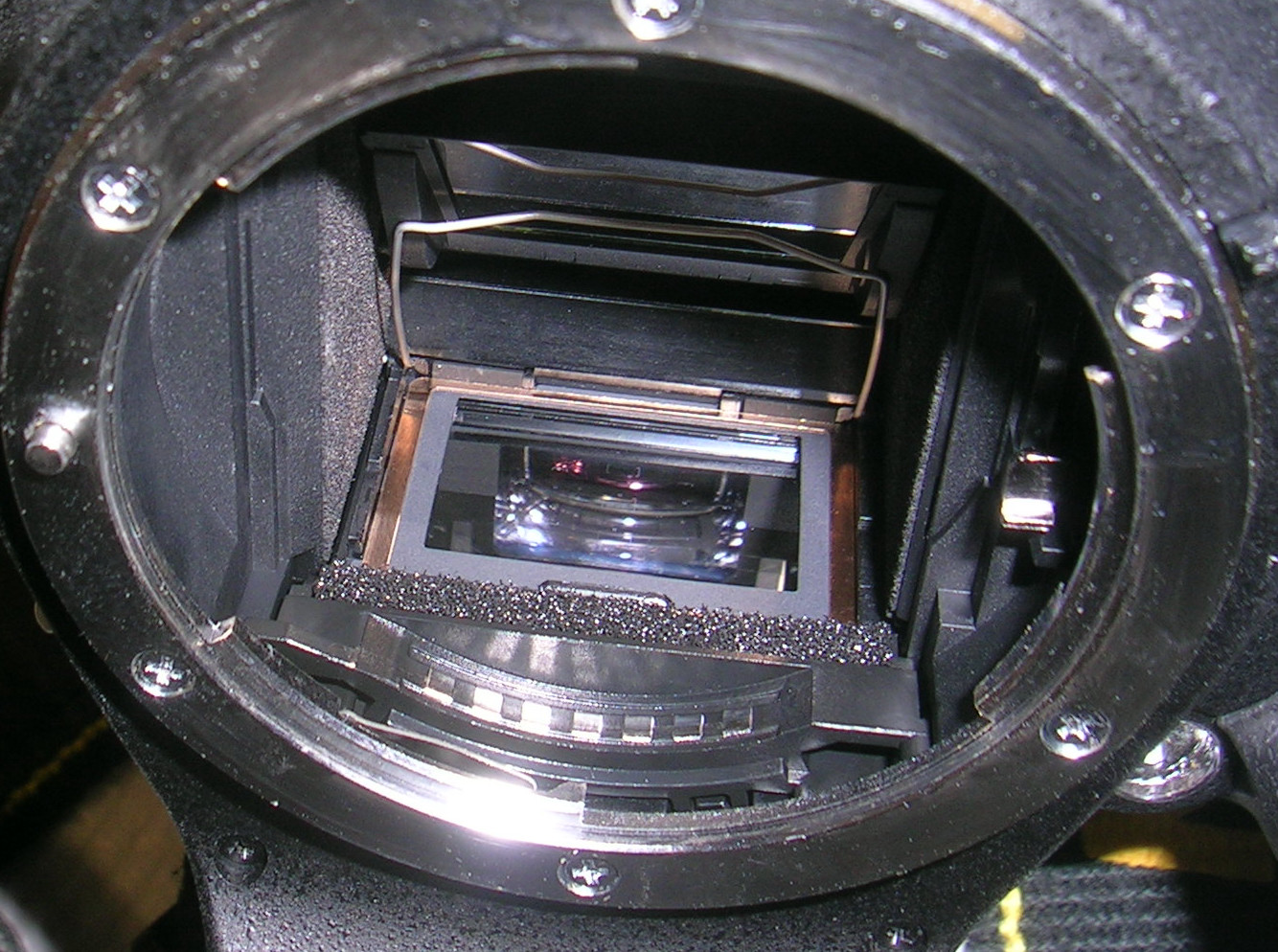
As Nikon USA refuses to sell spare parts like shims the only option for a fairly quick solution was to manufacture my own. This is not really rocket science, so I found a sheet of old used overhead transparency plastic sheet that seemed to be about 0.1mm thick and cut out a shim.
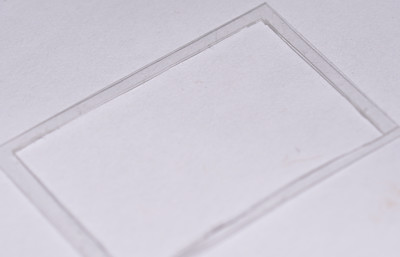
Not so pretty, but as long as it does not come in the way, and has reasonably uniform thickness, that should not matter. I placed it between the mask and the existing shim. Now the screen was going to go in again, and in a moments panic, I could not understand why the matte surface was going towards the pentamirror. (The tab has to go to the left in the body's notch of the image above.)
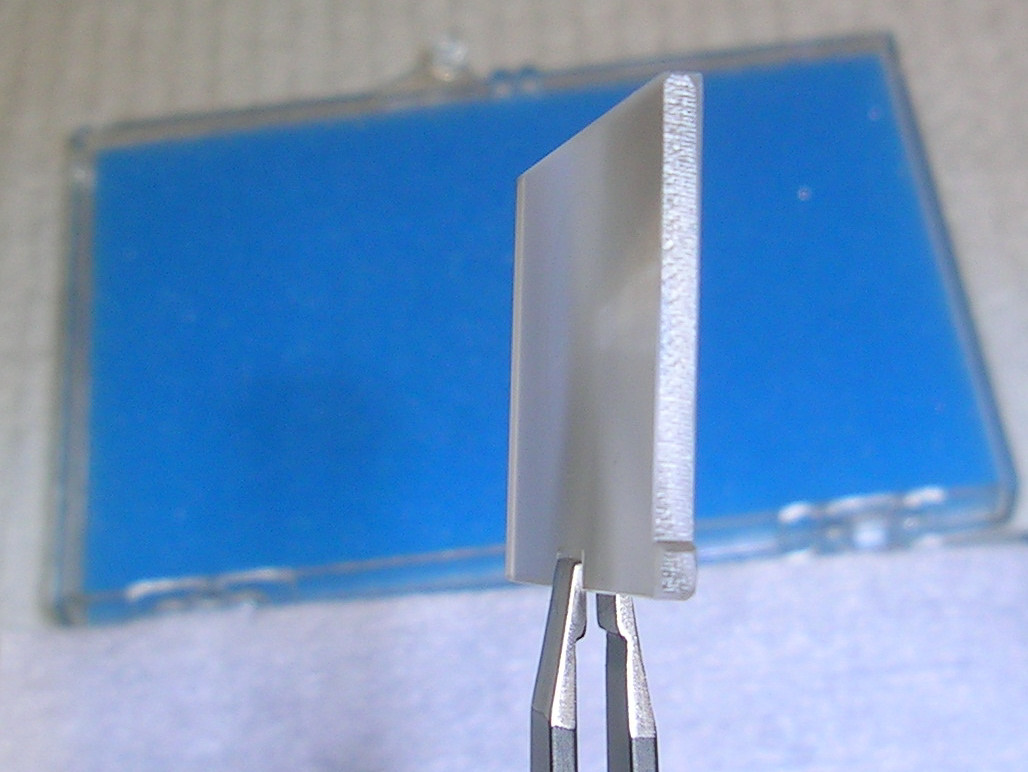
(Note the nice handling notch on the matte side).
All my older cameras like F2 had the ground glass towards the mirror, and a bulging surface towards the prism. However it was only one way to put it in and the original screen looked similar to the KatzEye in this respect. This was rewarded with success. Manual focus is now spot on without any further adjustment with all tested lenses and seems uniform across the screen, so this was a pretty lucky choice of shim. (Nikon's own shims come in 0.5mm steps from 0.05 to 0.2 mm so it is a fairly coarse adjustment.) I talked to Rachael at KatzEye and she confirmed that modern screens form the image on the prism side and has the Fresnel lens towards the mirror. So I learned something new. My guess is that this is necessary to let the eye focus at the screen image and the viewfinder info at the same time.
And here is the obligatory proof in the pudding: While testing focusing on some branches, a small bird that I believe is a Chestnut-backed Chickadee showed up in a small neighbor tree (view large). These birds quickly move around with only one second at each spot, but focus was still nailed with the correctly adjusted KatzEye focusing screen.

105mm f/2.5 AIS @ f/2.5, 1/800s ISO 100.
Another one, a Northern Harrier shot from a moving vehicle on a bumpy gravel road with my 300mm f/4 lens!
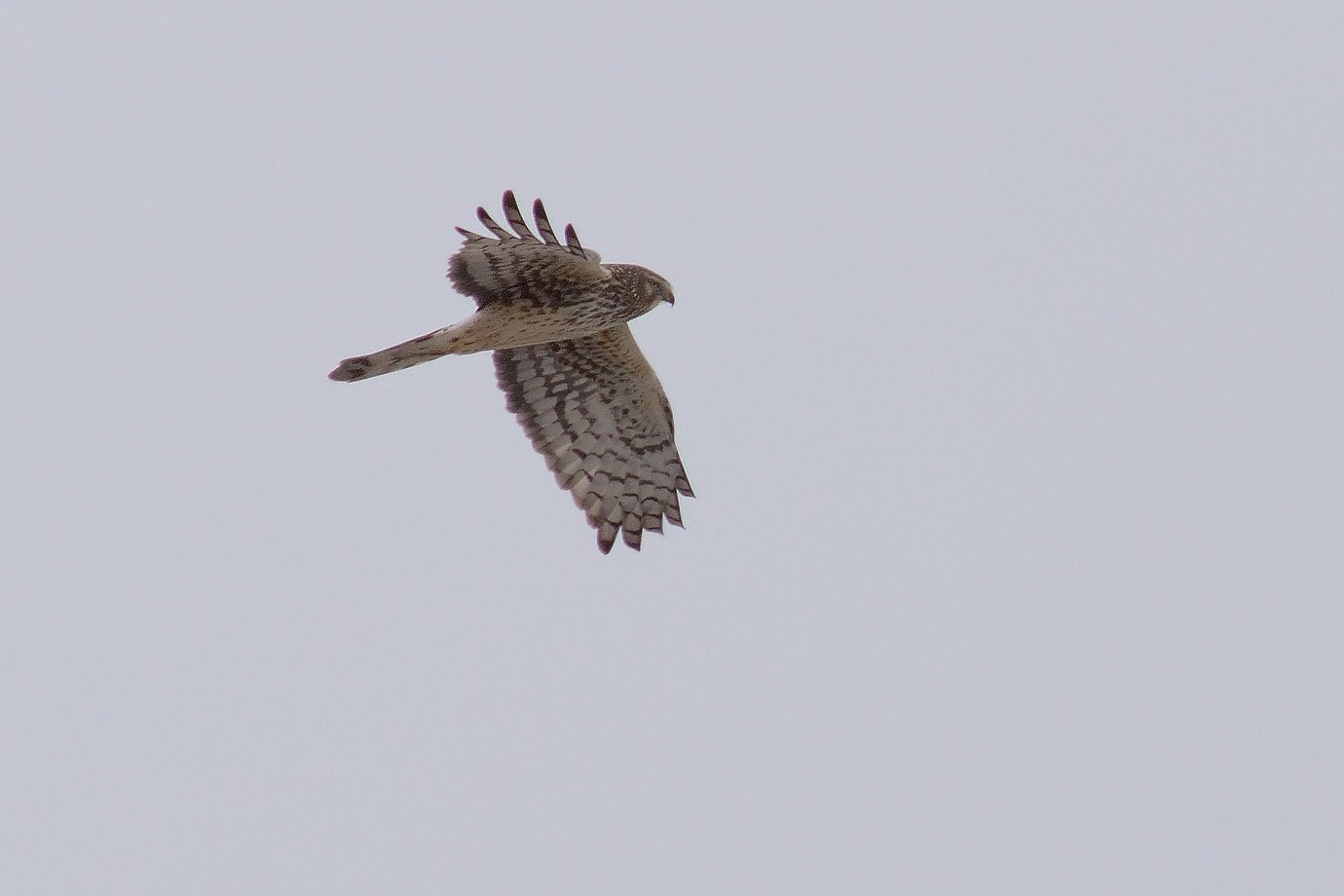
300mm f/7.10 1/2500s ISO 400 (manual focus on D5100):
One final comment on the D5100 viewfinder: While one cannot expect too much from a penta-mirror, I find the D5100 viewfinder image slightly dimmer and with a warmer tone than the similar constructed D40x viewfinder in spite of the magnification of the D5100 finder being smaller. Also I think the D40x viewfinder is somewhat crisper with the exception of a blurry line going down the middle, which is not noticeable in the D5100. As I also understood from Rachael at KatzEye, they used to check each body they install with a collimator, and she thought there has been a steady decline in precision of the Nikon bodies starting from D300 on. There is a possibility that a body could come with a maladjusted mirror, so that a mirror adjustment would improve its position. The question is how much (if) that would affect AF if the adjustment is large. The screens from
http://www.focusingscreen.com/ seem to standard come with a selection of shims. That could perhaps indicate that they are less standardized with respect to the thickness of the standard screen on the host body, or they could have a realistic relationship to the tolerances in general. Experiences from users of those screens would be very valuable now that Katzeye is out of the picture.